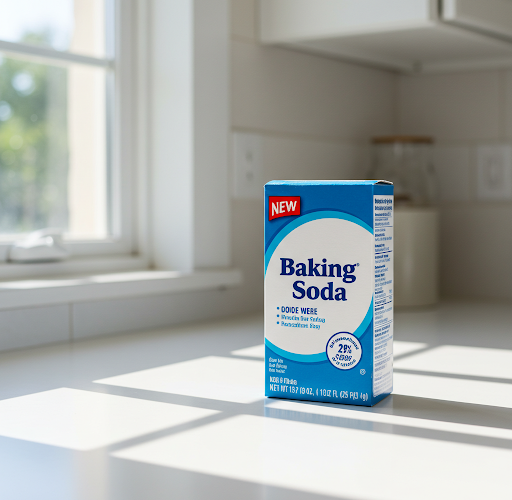As more gardeners move away from using chemical fertilizers and pesticides, many are turning to the natural methods their grandparents once used. Among the most versatile and effective of these time-tested solutions is an item found in nearly every kitchen—baking soda, also known as sodium bicarbonate.
Though commonly used for cooking and cleaning, baking soda offers powerful benefits in the garden when applied correctly. It not only helps protect vegetable crops like cucumbers, tomatoes, and peppers from disease, but it also supports overall plant health and can even boost yields.
The Power of Baking Soda in the Garden
Baking soda is a natural compound with antibacterial, antifungal, and antiviral properties. When applied to plants in the right concentrations, it helps suppress harmful pathogens and strengthens plant defenses, making it an excellent ally for organic vegetable growers. In addition to disease prevention, baking soda contributes to improving soil conditions and enhancing plant vitality.
Here are some of the ways sodium bicarbonate can support your garden:
-
Fungal protection: Baking soda is well-known for its ability to combat powdery mildew, black spot, and other fungal diseases common in vegetable crops.
-
Pest deterrent: It can act as a mild repellent against soft-bodied insects when used as a foliar spray.
-
Soil pH balance: In slightly acidic soils, baking soda can help neutralize excess acidity, promoting a more balanced growing environment.
-
Improved immunity: Regular use of baking soda has been linked to enhanced plant resistance to stress and disease, leading to stronger growth and better yields.
How to Prepare and Use Baking Soda in the Garden
To safely and effectively use baking soda in your vegetable garden, it’s essential to follow the proper mixing and application guidelines. Overuse or incorrect concentrations can lead to unwanted effects, such as leaf burn or soil imbalance.
Basic Baking Soda Solution
Ingredients:
-
10 liters of clean water
-
1 tablespoon of baking soda
Instructions:
-
Dissolve 1 tablespoon of baking soda in 10 liters of water. Stir thoroughly to ensure the baking soda is completely dissolved.
-
Use this solution within three hours of preparation for best results. Baking soda solutions lose effectiveness over time, so fresh batches should always be made before each use.
Application:
-
Watering: Pour the solution directly at the base of the plant, allowing the roots to absorb its benefits.
-
Spraying: Use a garden sprayer to mist the leaves of the plants. This is especially useful for preventing or treating early signs of fungal disease.
Apply the solution once every 15 days. This regular interval is enough to support plant health without overwhelming the soil with sodium. It’s important not to exceed this frequency or concentration, as too much sodium can disrupt soil pH, damage roots, and ultimately reduce yields.
Caution and Best Practices
While baking soda is natural and generally safe, it’s still important to use it responsibly:
-
Avoid overdosing: Too much baking soda can lead to an alkaline soil environment, which may interfere with nutrient uptake. Stick to the recommended dosage of 1 tablespoon per 10 liters of water.
-
Observe your plants: After the first application, monitor how your plants react. If you notice any signs of leaf curling, yellowing, or poor growth, pause the treatment and reassess soil conditions.
-
Combine with other natural methods: Baking soda is most effective when used as part of a comprehensive, organic gardening approach. Compost, mulch, and crop rotation can all support plant health alongside baking soda applications.
-
Do not store the solution: Always prepare fresh batches. Once mixed with water, baking soda solutions quickly lose their effectiveness and may even cause harm if left to sit too long.
Conclusion
Baking soda is a time-tested, affordable, and natural way to support the health of your vegetable garden. Whether you’re growing tomatoes, cucumbers, peppers, or a variety of crops, this simple household ingredient can help protect your plants from disease, strengthen their resistance, and even contribute to higher yields—without relying on synthetic chemicals.
By following the recommended practices and applying it regularly but responsibly, you can enjoy a thriving organic garden with vibrant, healthy vegetables. Embracing such traditional, natural solutions not only benefits your plants but also promotes a more sustainable and environmentally friendly way of gardening.



